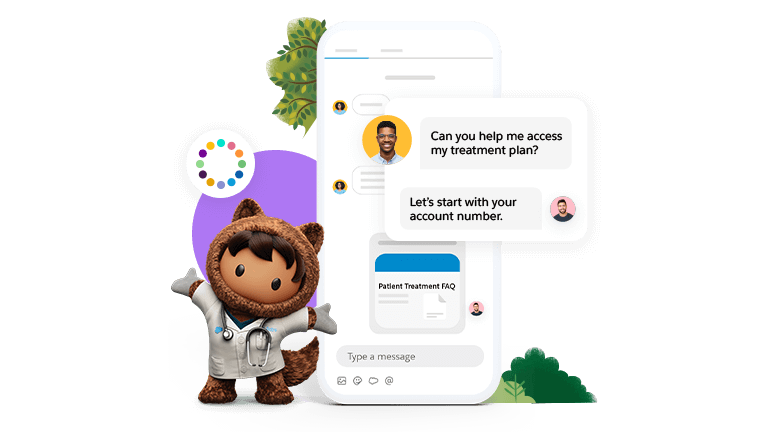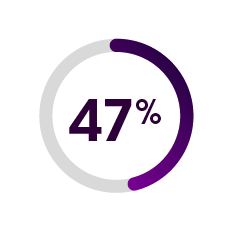
Building trust starts with consistent experiences. As a first step, connect systems of record, including internal and external data. This might include electronic health records (EHR), claims, population health, and wearable device data. This will enable you to unlock a 360-degree view that you can then pair with an integrated CRM platform designed for healthcare. Application programming interfaces (APIs) connect systems and pull in data to create a single source of truth for internal and external interactions. Here’s how it works:
- Access data in real time: View complete consumer data, including appointment scheduling behavior, communication preferences, care team members, health timelines, and interactions. Organizations can also review critical health information such as social determinants and risk stratification, and segment by type and severity of condition or geographic region
- Collaborate in real time: Work cross-functionally on any device to influence better experiences and outcomes. Easily reference and coordinate relationships across each patient’s care plan and team. The result is easier, faster, and more accurate communication between teams and healthcare consumers.
- Make intelligent care decisions: Arm your teams with smarter care management tools so they stay focused on consumers and the tasks that require the most attention.
- Prevent care gaps: Make the most of EHR and other data sources to facilitate case collaboration, track wellness, and recommend solutions with automated alerts and notifications.
- Scale wellness and disease management: Create personalized care plans, send assessments to collect key information, and understand care progress based on accessible, reliable, and real-time data, including clinical, engagement, and communication activity.

A healthcare CRM that has an analytics solution with built-in artificial intelligence (AI) capabilities surfaces actionable insights that improve patient and member touchpoints. After consolidating data, providers and payers can access real-time data on populations, segment by age group or identify conditions to personalize messaging. Consider embedding intelligent analytics and predictive modeling to make decisions that improve patient and member interactions.
- Unlock next best actions: Use past behaviors to drive recommendations for the best course of action. This helps to inform care programs, adjust risk modeling, and improve outreach
- Improve proactive outreach: Identify the likelihood for a consumer to miss a care plan task or health milestone and take proactive action to improve goal achievement.
- Optimize referrals: Prioritize referral sources based on historical data, predict the most lucrative and best referral sources, and identify the best course of action.
- Connect devices and wearables: Integrate medical device and wearables data for real-time visibility into vital health information. Access to this data can inform behaviors and intervention strategies.
- Enhance support services: Publish frequently asked questions and helpful knowledge articles to improve the self-service experience.
CHC workers can identify social determinants of health, proactively address barriers to care, and ensure better health outcomes for its members
CHC offers members better self-service capabilities, including a self-service portal to easily address claims and common questions
CHC simplified first call resolution by incorporating intelligent automation to more effectively triage member questions and recommend next best answers
CHC engages members via text and email to offer a more connected member journey
Next: Step 3: Integrate and Scale
- Easily Comply with New Interoperability Regulations
- Accelerate Innovation with an API-led Approach
- Build Scalable, HIPAA-Compliant Apps








